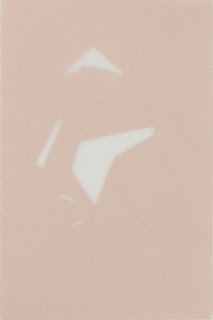I made these videos for some more of the non-art-major students in my class as a review tool after the initial introduction to intaglio printmaking. The class has many students who's first language is not English, which drives me to create more visual cues in my instruction. Even those for whom English is the native language, Art can seem like a second language, therefore review tools are valuable resources for the uninitiated.
The videos were made in one hour between classes. They were edited and posted to YouTube in one night after dinner. Even if the production value is low, the information has been useful to students.
https://www.youtube.com/playlist?list=PLzYT1bX0RsTndYuPI56YeOiXsBHpZ5Twp
***Updated April 29, 2016***
Below are the different states of both plates from this video.
It is a running record of the creative process. (Images are purposely degraded then compressed to help protect intellectual property.)
Monday, April 18, 2016
Monday, April 11, 2016
Reduction Block Printing (planes)
Teaching a printmaking class in which only one student is an art major has made me question the assumed knowledge base of a class like this. Even before being confronted with the lack of drawing skill, I had the realization that many did not have much skill of hand of any sort, as well as the capacity to hold simple layering concepts in their minds. Therefore, I felt the only way to effectively teach to this group was to break the process into much simpler steps, while simultaneously bringing the demonstrations beyond the normal cursory introduction of a concept. Below you will see the result of the reduction block printing demonstrations I did over the last two weeks. I intentionally used planes, as I wanted the students to get away from relying on lines and start thinking about layers and implied lines. Of course, the idea of working from light to dark colors was also an integral part of this lesson.
The last image, with the black background, was helpful to students who did not yet know how much information exists within shadows. I prefer the chromatic black effect of the second to last image (and that is the state which saw a full edition), but full black layer in the last image was a helpful aid in discussing how tone shifts as each new color/tone is placed up on the image. It does reveal that the other darker layers in the earlier state were made with transparent green.
(update: I made a set of instruction videos for my students. Here is a link to the post http://artandwater.blogspot.com/2017/03/multi-color-multi-block-print-you-can.html)
The last image, with the black background, was helpful to students who did not yet know how much information exists within shadows. I prefer the chromatic black effect of the second to last image (and that is the state which saw a full edition), but full black layer in the last image was a helpful aid in discussing how tone shifts as each new color/tone is placed up on the image. It does reveal that the other darker layers in the earlier state were made with transparent green.
(update: I made a set of instruction videos for my students. Here is a link to the post http://artandwater.blogspot.com/2017/03/multi-color-multi-block-print-you-can.html)
Subscribe to:
Posts (Atom)








